#Passwordless Authentication
Explore tagged Tumblr posts
Text
The Rise of Passwordless Authentication | Shaping the Future of Digital Security

In an era where cybersecurity threats are becoming more sophisticated, passwordless authentication is emerging as the future of digital security. With traditional password-based security systems being increasingly vulnerable to cyberattacks like phishing, credential stuffing, and data breaches, businesses and individuals are turning towards more secure, seamless, and user-friendly authentication methods. This shift is driving the growth of the passwordless authentication market, which is on track to reach a staggering USD 68.29 billion by 2034.
As organizations strive to enhance security while improving user experiences, passwordless authentication offers a viable solution by eliminating the reliance on passwords, which are often weak or reused. Instead, it leverages biometric identifiers, hardware tokens, and other advanced technologies to authenticate users, providing a robust and reliable alternative.
Analyzing the Passwordless Authentication Market Size
The passwordless authentication market is currently valued at USD 16.59 billion in 2024, with projections showing an impressive growth trajectory. Between 2025 and 2034, the market is expected to grow at a compound annual growth rate (CAGR) of 15.20%. By 2034, this growth will propel the market to an estimated value of USD 68.29 billion.
This growth is being driven by the increasing demand for more secure, efficient, and scalable authentication methods, particularly in industries such as finance, healthcare, and retail. The rapid adoption of mobile devices, cloud computing, and Internet of Things (IoT) technologies is expected to further fuel the need for passwordless solutions, as organizations seek to ensure that their digital environments remain secure without relying on outdated password systems.
Key Trends Driving the Growth of Passwordless Authentication
Several trends are shaping the rapid rise of passwordless authentication solutions. These include:
Biometric Authentication: The integration of biometric authentication methods such as fingerprint scanning, facial recognition, and voice recognition has become a mainstream trend. These methods offer high levels of security while enhancing the user experience by enabling quick and easy access.
Cloud Integration: With the increasing shift to cloud-based platforms, passwordless authentication is becoming integral to securing cloud environments. Businesses are looking for solutions that enable secure, seamless access to cloud-based applications and services without the need for traditional passwords.
Multi-Factor Authentication (MFA): The adoption of multi-factor authentication alongside passwordless technologies is providing an added layer of security. Combining biometric methods with hardware tokens or one-time passcodes (OTP) ensures that users' identities are verified with multiple levels of security.
Adoption in High-Risk Sectors: Industries such as banking, finance, healthcare, and government are increasingly adopting passwordless solutions due to the need for enhanced security and compliance with regulations like GDPR and HIPAA. These sectors face heightened risks and require robust authentication systems to safeguard sensitive data.
Opportunities and Challenges in the Passwordless Authentication Market
Opportunities:
Increasing Cybersecurity Concerns: As data breaches and identity theft become more common, organizations are prioritizing secure authentication solutions. This presents a major opportunity for passwordless authentication providers to fill the gap left by traditional password-based systems.
Adoption in High-Risk Industries: Sectors like finance, healthcare, and retail, which deal with sensitive customer data, are particularly inclined to adopt passwordless solutions to reduce fraud and enhance user trust.
Technological Advancements: The continuous development of biometric technologies, AI, and machine learning will further enhance the capabilities of passwordless authentication solutions, driving greater adoption across various industries.
Challenges:
Privacy and Regulatory Concerns: While passwordless authentication enhances security, it also raises concerns related to privacy and data protection. Stringent regulatory requirements may hinder market growth unless companies can ensure compliance with local and international laws.
Initial Setup Costs: Implementing passwordless authentication solutions can be expensive, particularly for small and medium-sized businesses. The initial cost of adopting these technologies may be a barrier to entry for some organizations.
User Resistance: Some users may be resistant to change, especially if they are accustomed to traditional password-based systems. Overcoming this resistance will require education and user-friendly design in authentication solutions.
Segmentation of the Passwordless Authentication Market
The passwordless authentication market can be segmented in several key ways to understand its structure and growth potential:
By Component:
Hardware
Software
Services
By Product Type:
Fingerprint Authentication
Iris Recognition
Face Recognition
Voice Recognition
Smart Card
Palm Print Recognition
Others
By Authentication Type:
Single-Factor
Multi-Factor
By Portability:
Fixed
Mobile
By End-Use Industry:
Aerospace and Defence
BFSI (Banking, Financial Services, and Insurance)
Government and Law Enforcement
Healthcare
IT and Telecom
Retail
Transportation and Logistics
Others
By Region:
North America
Europe
Asia Pacific
Latin America
Middle East and Africa
Market Growth Drivers: Why Passwordless Authentication Is the Future
The growing need for seamless, secure digital experiences is driving the demand for passwordless authentication solutions. Several factors contribute to the expansion of this market:
Security Concerns: Traditional passwords are often compromised through phishing attacks or data breaches. Passwordless authentication provides stronger security measures by using biometrics and hardware-based tokens.
User Convenience: Passwordless solutions offer a more convenient experience for users, eliminating the need to remember complex passwords and reducing friction in digital interactions.
Scalability: As organizations scale their operations, they need authentication systems that can easily accommodate a growing number of users without compromising security. Passwordless authentication systems can provide scalable solutions that support large user bases.
Mobile and Cloud Integration: With the growing reliance on mobile devices and cloud services, businesses require solutions that integrate seamlessly into these ecosystems. Passwordless authentication is ideally suited for this environment.
Forecast: What’s Next for the Passwordless Authentication Market?
Looking ahead, the passwordless authentication market is poised for continued growth. By 2034, the market is forecast to reach a valuation of USD 68.29 billion. This growth will be driven by technological advancements, rising cybersecurity threats, and the increasing adoption of digital services across industries. The growing emphasis on user experience, security, and regulatory compliance will continue to fuel the demand for passwordless authentication solutions.
Get a Free Sample Report with a Table of Contents
Competitor Analysis: Leading Companies in the Passwordless Authentication Space
The passwordless authentication market features a range of established companies and new entrants striving to innovate and offer advanced solutions. Some of the key players in this space include:
HID Global Corporation: A leader in identity and access management solutions, offering advanced biometric and card-based authentication methods.
Microsoft Corporation: A dominant force in cloud-based services, driving the integration of passwordless authentication through its Azure Active Directory and Windows Hello platforms.
Google LLC: A global tech giant with a strong focus on improving security and user authentication across its ecosystem, particularly through Google Account services.
IBM Corporation: Known for its cybersecurity expertise, IBM provides enterprises with secure identity management and authentication solutions tailored to complex IT environments.
Fujitsu Limited: Offers biometric authentication technologies, including fingerprint and iris recognition, that help organizations secure their digital assets.
NEC Corporation: A leader in biometric technologies, NEC offers a range of authentication methods, including facial recognition, used in various industries.
Okta, Inc.: A leading identity management provider offering seamless passwordless authentication solutions for enterprises across multiple sectors.
Thales Group: Specializes in providing secure authentication technologies that meet the needs of various industries, including aerospace, government, and finance.
Cisco Systems, Inc.: A key player in network security, Cisco offers passwordless solutions to enhance authentication and protect digital infrastructures.
Secret Double Octopus: Focuses on removing passwords entirely, offering advanced multi-factor authentication solutions that prioritize both security and user experience.
#Passwordless Authentication#Passwordless Authentication Size#Passwordless Authentication Growth#Technology#MediaMedia
1 note
·
View note
Text
In the age of AI, authentication shouldn't be a static barrier; it should be an intelligent, adaptive, and engaging experience. Within @leonbasinwriter Intelligence Singularity, access is not simply granted—it's earned through a dynamic interplay with AI itself.
#adaptive authentication#ai#AI Security#AI security authentication system access control#AI-driven authentication#Artificial Intelligence#authentication challenge#chatgpt#Claude#cybersecurity project#digital-marketing#Express.js#intelligence singularity#Javascript#LLM#multi-layered authentication#nft#Node.js#OpenAI#passwordless authentication#portfolio project#prompt engineering#proof of concept#research project#technology#user experience#web security#Web3#zero-trust security
0 notes
Text
0 notes
Text
Passwordless Authentication System
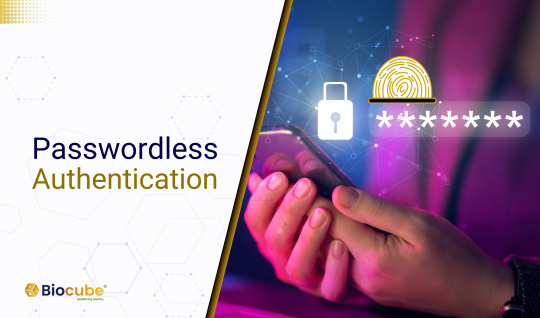
Dive into the future of authentication with our latest blog! Discover everything you need to know about Passwordless Authentication and how it's revolutionizing security.
Read now: https://biocube.ai/blog/passwordless-authentication-system/
#passwordless authentication#passwordless#authentication#biometrics#technology#passwordless technology#authentication system#biometric authentication
0 notes
Text
FIDO Technology: The Future of Secure Online Authentication
The Revolution in Online Authentication: FIDO Technology Explained Introduction:In today’s digital age, security and convenience are at the forefront of online interactions. Traditional username and password authentication methods have proven to be vulnerable to various cyber threats, leading to a search for more robust alternatives. Enter FIDO, which stands for “Fast Identity Online.” FIDO…
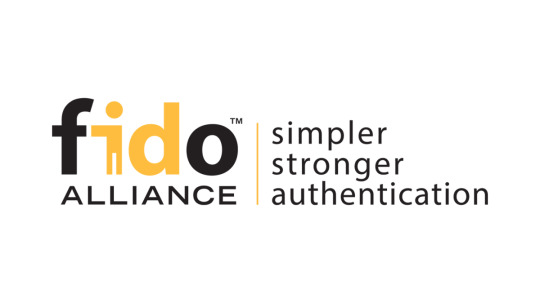
View On WordPress
#Biometrics#Cybersecurity#FIDO Technology#Online Authentication#Passwordless Authentication#Two-Factor Authentication#User Privacy
0 notes
Text
#CoherentMI#Passwordless Authentication Market#Passwordless Authentication Market Trend#Passwordless Authentication Market Size
0 notes
Text
Passwordless Authentication Market 2032: Industry Size, Share & Forecast
Passwordless Authentication Market size was valued at USD 17.1 billion in 2024 and is expected to grow to USD 71.2 billion by 2032 and grow at a CAGR of 17.2 % over the forecast period of 2024-2032.
The Passwordless Authentication Market is rapidly emerging as a transformative force in digital security, addressing the growing concerns over password vulnerabilities and user friction. As organizations across sectors strive to enhance user experience while maintaining robust cybersecurity postures, the demand for authentication methods that eliminate traditional passwords has accelerated. This shift is fueled by the increasing sophistication of cyber threats and the limitations of legacy login systems.
The Passwordless Authentication Market is being driven by the need for more secure, seamless, and scalable identity verification solutions. With phishing, credential stuffing, and brute-force attacks on the rise, enterprises are moving toward advanced technologies like biometric recognition, cryptographic keys, and device-based authentication. These solutions are being integrated across web applications, mobile devices, and enterprise systems to reduce security risk and enhance operational efficiency.
Get Sample Copy of This Report:https://www.snsinsider.com/sample-request/3087
Market Keyplayers:
Microsoft (Windows Hello, Azure AD Passwordless)
Google (Google Authenticator, FIDO2-based Login)
Okta (Okta Identity Engine, Okta Verify)
IBM (IBM Security Verify, IBM Cloud Identity)
Yubico (YubiKey 5 Series, YubiHSM)
HID Global (ActivID, HID DigitalPersona)
Ping Identity (PingOne, PingID)
Auth0 (Auth0 Identity Platform, Auth0 Passwordless)
Thales Group (SafeNet Trusted Access, Thales Luna HSM)
OneSpan (Cronto, Digipass)
Market Analysis
Passwordless authentication represents a paradigm shift in the digital identity ecosystem. Rather than relying on knowledge-based credentials, it leverages biometrics (such as facial recognition, fingerprints, or retina scans), security tokens, behavioral patterns, or public key infrastructure (PKI) to verify users. These approaches significantly reduce the attack surface while improving the user experience.
Adoption is increasing across sectors including banking, healthcare, government, retail, and IT, where regulatory compliance and user trust are paramount. Enterprises are recognizing that password fatigue and reset costs not only impact productivity but also expose systems to frequent breaches. As a result, passwordless authentication is evolving from a security upgrade to a strategic imperative.
Scope
The scope of the passwordless authentication market encompasses:
Biometric Authentication: Facial, fingerprint, voice, iris, and behavioral biometrics.
Token-Based Authentication: Smart cards, USB security keys (e.g., FIDO2), and one-time hardware tokens.
Magic Links and OTP Alternatives: Secure links sent via email or SMS as login tools, often used in consumer applications.
Authentication Platforms: Cloud-based identity and access management (IAM) platforms offering passwordless features, integration APIs, and device identity capabilities.
Device-Based Authentication: Leveraging smartphones and wearables to authenticate users using device trust and built-in security hardware.
Enquiry of This Report: https://www.snsinsider.com/enquiry/3087
Market Segmentation:
By Component
Hardware
Software
Services
By Portability
Fixed
Mobile
By Product Type
Fingerprint Authentication
Palm Print Recognition
Iris Recognition
Face Recognition
Voice Recognition
Smart Card
Others
By Authentication Type
Single-factor Authentication
Multi-factor Authentication
By End Use
IT & Telecom
BFSI
Healthcare
Government
Retail
Transportation & Logistics
Aerospace & Defence
Market Forecast
The outlook for the passwordless authentication market remains strong, with rapid adoption expected in enterprise, SMB, and public sector applications. As digital transformation accelerates, more organizations are prioritizing identity-first security strategies that eliminate weak credentials.
Growth will be bolstered by increasing investment in cloud security, the expansion of remote workforces, and government mandates to enforce strong user authentication. Vendors are likely to focus on interoperability, privacy compliance (such as GDPR and CCPA), and user-centric design to boost adoption.
Future Prospects
The future of passwordless authentication lies in its ability to combine security and convenience at scale. As AI and machine learning become more integrated into identity systems, the potential for adaptive and continuous authentication grows. In the coming years, expect to see passwordless solutions integrated directly into consumer devices, workplace applications, and public digital infrastructure.
Further advancements in edge computing, decentralized identity (DID), and verifiable credentials will create new pathways for secure and user-controlled access systems. Passwordless identity verification is also expected to play a key role in sectors like fintech, online education, and telemedicine.
Trends
Rise of FIDO2 and WebAuthn Standards: Industry-backed initiatives are setting the groundwork for broad interoperability across devices and platforms.
Integration with IAM and Zero-Trust Architectures: Passwordless solutions are increasingly embedded into modern access control frameworks.
Biometric Advancements: Touchless and multi-modal biometric systems are gaining ground for both physical and digital access.
Growth in Consumer Applications: From banking apps to e-commerce platforms, passwordless logins are enhancing user engagement.
Decentralized Identity (DID): Blockchain and self-sovereign identity solutions are laying the foundation for privacy-first, user-owned authentication systems.
Cloud-First and Hybrid Environments: Solutions that support flexible deployment models are seeing greater traction in enterprise IT strategies.
Access Complete Report: https://www.snsinsider.com/reports/passwordless-authentication-market-3087
Conclusion
In summary, the Passwordless Authentication Market is reshaping digital security by removing the weakest link in the authentication chain: the password. As businesses aim for frictionless user experiences and stronger defenses against cyber threats, passwordless technologies will become the gold standard for identity verification in a connected world.
About Us:
SNS Insider is one of the leading market research and consulting agencies that dominates the market research industry globally. Our company's aim is to give clients the knowledge they require in order to function in changing circumstances. In order to give you current, accurate market data, consumer insights, and opinions so that you can make decisions with confidence, we employ a variety of techniques, including surveys, video talks, and focus groups around the world.
Contact Us:
Jagney Dave - Vice President of Client Engagement
Phone: +1-315 636 4242 (US) | +44- 20 3290 5010 (UK)
#Passwordless Authentication Market#Passwordless Authentication Market Scope#Passwordless Authentication Market Trends
0 notes
Text
Passwordless Authentication: The Future of Secure Logins
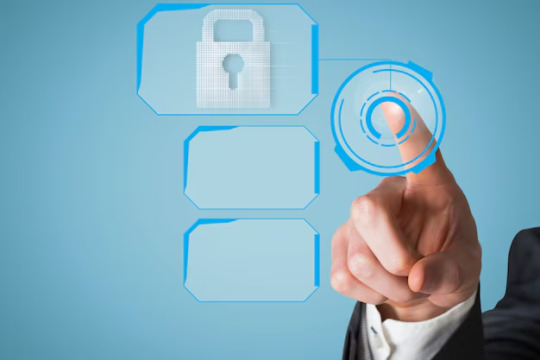
In an era where cyber threats are evolving rapidly, traditional password-based authentication is proving to be a weak link in digital security. Passwords are often reused, forgotten, or easily compromised, making them an easy target for cybercriminals. Enter passwordless authentication—a revolutionary approach that enhances security while improving user experience. If you're keen on mastering cybersecurity trends like this, enrolling in a cybersecurity course can be your first step toward a secure digital future.
The Problem with Passwords
Despite the advancement in security technologies, passwords remain one of the most vulnerable aspects of authentication. Here’s why:
Weak Passwords: Many users create simple passwords for convenience, making them easy to crack.
Reused Credentials: People tend to reuse passwords across multiple platforms, increasing their risk.
Phishing Attacks: Cybercriminals use deceptive techniques to steal passwords.
Credential Stuffing: Attackers use leaked passwords to gain unauthorized access to multiple accounts.
These issues make it clear that passwords alone are no longer sufficient to secure online identities.
What is Passwordless Authentication?
Passwordless authentication eliminates the need for traditional passwords by leveraging more secure and user-friendly alternatives, such as:
Biometric Authentication – Uses fingerprints, facial recognition, or retina scans.
One-Time Passwords (OTP) – A temporary code sent via SMS, email, or authenticator apps.
Magic Links – Secure links sent to a user’s registered email or phone number for login.
Hardware Security Keys – USB or NFC-based security devices that authenticate users.
Mobile Authentication Apps – Apps like Google Authenticator or Microsoft Authenticator generate secure codes.
Benefits of Passwordless Authentication
1. Enhanced Security
By removing passwords, the risk of phishing, brute force attacks, and credential leaks is significantly reduced.
2. Improved User Experience
Users no longer need to remember complex passwords or go through tedious password recovery processes.
3. Reduced IT Costs
Organizations save on password-related support costs, such as resetting forgotten passwords.
4. Resistance to Phishing and Credential Theft
With authentication methods like biometrics and hardware security keys, cybercriminals have no credentials to steal.
How Passwordless Authentication is Reshaping Cybersecurity
Many organizations are adopting passwordless authentication to secure their digital ecosystems. Tech giants like Microsoft, Google, and Apple are already integrating passwordless solutions into their platforms. The FIDO (Fast Identity Online) Alliance is working towards widespread adoption of passwordless authentication standards.
Cybersecurity professionals must stay ahead of these advancements. If you're looking to build a career in this domain, taking a cybersecurity course can help you understand and implement modern authentication mechanisms effectively.
Challenges in Adopting Passwordless Authentication
While passwordless authentication is the future, it comes with challenges:
Initial Implementation Costs – Organizations must invest in infrastructure upgrades.
User Adaptation – Users need time to transition from traditional passwords.
Biometric Privacy Concerns – Storing biometric data securely is crucial to prevent misuse.
Conclusion
Passwordless authentication is not just a trend—it is the future of secure logins. It enhances security, improves user experience, and reduces the risks associated with password-based authentication. As cyber threats become more sophisticated, organizations and individuals must adopt modern authentication methods to stay protected.
Want to be at the forefront of these cybersecurity innovations? Consider enrolling in a cybersecurity course to gain hands-on expertise in advanced security solutions.
The future of authentication is passwordless—are you ready for it?
0 notes
Text
Weekly output: Boom Supersonic's XB-1, Comcast low latency, painstaking passkey progress
This has been a strange, sad and shocking week in the nation’s capital–first the mid-air collision outside National Airport Wednesday that left 67 people dead and ended a nearly 16-year streak without fatal crashes by U.S. airlines, then Elon Musk’s attempts to stage what I have to call a digital coup at the Treasury Department and the Agency for International Development. Patreon readers got an…

View On WordPress
#Andrew Shikiar#authentication#Boom Supersonic#Comcast#FIDO Alliance#infosec#low lag#low latency#Mach 1#passkeys#passwordless#supersonic#XB-1
0 notes
Video
youtube
Top 5 Common Password Mistakes
#youtube#passwords security hacking passkeys 2FA biometrics authentication protection passwordless advice
0 notes
Text
Passkeys: Secure, But Not User-Friendly? Holiday Tech Support Nightmare
Incoming With passkeys becoming more prevalent, concerns about their usability are rising just in time for the holiday season, when many people rely on tech support for assistance.


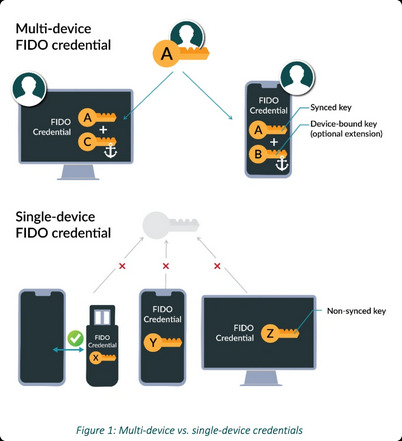
0 notes
Text
Discover How Passwordless Authentication is Transforming Online Security. Learn about its Benefits, How it works and why it's the future is secure, hassale-free logins.
0 notes
Text
Dashlane ditching master passwords

A top-tier password manager maker is ditching the use of master passwords and offering its users a totally passwordless experience. https://jpmellojr.blogspot.com/2023/12/dashlane-ditching-master-passwords.html
0 notes
Text
#Passwordless Facebook login#Facebook authentication methods#Two-factor authentication for Facebook#Biometric login for Facebook#Facebook login alternatives
0 notes
Text
The Future of Passwords: Do We Really Need Them?
Passwords are one of the most common and widely used methods of authentication on the internet. They are supposed to protect our online accounts and data from unauthorised access and misuse. Passwords are increasingly becoming a source of frustration and insecurity for users and organisations alike. They are often easy to guess, hard to remember, and reused across multiple sites, making them…

View On WordPress
#2022 Data Breach Investigations Report#alternative authentication methods#biometrics#cybersecurity#Dashlane#Equifax#Google#IBM#LastPass#MFAs#passkeys#passwordless#Passwords#Verizon
0 notes
Text
Beyond Passwords: Exploring Advanced Authentication Methods
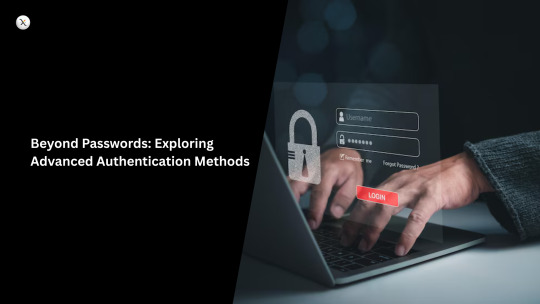
For decades, the humble password has been the gatekeeper to our digital lives. But in an era of increasingly sophisticated cyber threats and the sheer volume of online accounts we manage, passwords are showing their age. They're easily forgotten, susceptible to phishing attacks, and often the weakest link in our security chain. Thankfully, the future of authentication is here, offering a range of more secure and user-friendly methods that go far beyond the traditional password. Let's explore some of these exciting advancements.
The Password Problem: Why We Need to Evolve
Before diving into the alternatives, it's crucial to understand why passwords are no longer cutting it:
Human Fallibility: We're prone to choosing weak passwords, reusing them across multiple sites, and forgetting them, leading to frustration and insecure practices.
Phishing Attacks: Social engineering tactics like phishing emails can easily trick users into revealing their passwords.
Brute-Force Attacks: Automated tools can try millions of password combinations in a short amount of time.
Data Breaches: Massive databases of compromised passwords are regularly exposed, putting countless accounts at risk.
The Rise of Stronger Authentication Methods:
The good news is that a new wave of authentication technologies is emerging, offering enhanced security and often a more seamless user experience.
1. Multi-Factor Authentication (MFA): Layering Up Security
While not a complete replacement for passwords, MFA is a crucial step beyond them. It requires users to provide two or more verification factors to gain access. These factors typically fall into three categories:
Something you know: Your password or PIN.
Something you have: A physical token, a smartphone receiving a one-time code (OTP), or a security key.
Something you are: Biometric authentication like fingerprint scanning, facial recognition, or iris scanning.
MFA significantly reduces the risk of unauthorized access, even if a password is compromised.
2. Biometric Authentication: Leveraging Your Unique Identity
Biometrics uses unique biological characteristics to verify identity. Common methods include:
Fingerprint Scanning: Convenient and widely adopted on smartphones and laptops.
Facial Recognition: Using facial features to identify and authenticate users. Advancements are making it more secure against spoofing.
Iris Scanning: Analyzing the unique patterns in the iris of the eye, offering a high level of accuracy.
Voice Recognition: Authenticating users based on their unique voice patterns.
Biometrics offers a strong combination of security and convenience, eliminating the need to remember complex passwords.
3. Security Keys (Physical Tokens): The Hardware Fortress
Security keys are physical devices that plug into a computer's USB port or connect wirelessly (NFC, Bluetooth). They use cryptographic protocols to verify the user's identity and ensure the legitimacy of the login attempt. Security keys are highly resistant to phishing and other remote attacks, offering a very strong level of security.
4. Passwordless Authentication: Saying Goodbye to Passwords Entirely
The ultimate goal for many is to move beyond passwords altogether. Several passwordless authentication methods are gaining traction:
Magic Links: A unique, time-sensitive link is sent to the user's email or phone. Clicking the link verifies their identity and grants access.
Biometric Authentication (as a primary factor): Using fingerprint or facial recognition as the sole method of authentication, often tied to a secure element on the device.
FIDO2 (Fast Identity Online): An open standard that enables strong, passwordless authentication across websites and applications using biometrics or security keys.
Push Notifications: A notification is sent to a trusted device, requiring the user to approve the login attempt.
5. Behavioral Biometrics: Learning Your Unique Habits
This emerging technology analyzes unique patterns in how users interact with their devices, such as typing speed, mouse movements, scrolling patterns, and even gait. By establishing a baseline of normal behavior, the system can detect anomalies that might indicate unauthorized access. Behavioral biometrics adds a layer of continuous authentication, monitoring user activity even after login.
The Future of Access: A Multi-Layered Approach
The future of authentication is likely to be a multi-layered approach, combining several of these advanced methods to create a more secure and user-friendly experience. We might see a world where:
Logging into your laptop involves facial recognition combined with a security key for sensitive actions.
Accessing your bank account requires fingerprint authentication and a one-time code sent to your phone.
Continuous authentication through behavioral biometrics silently monitors your activity for any suspicious patterns.
Embracing the Evolution:
Moving beyond passwords is not just a matter of convenience; it's a necessity for enhanced security in an increasingly complex digital landscape. As these advanced authentication methods become more widely adopted, we can look forward to a future where our digital lives are better protected, and the frustration of forgotten passwords becomes a distant memory. It's time to embrace the evolution and step into a more secure and seamless authentication future.
0 notes